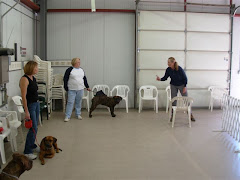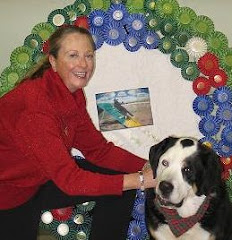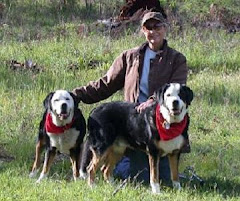Cancer, malnutrition, and even allergies don't develop overnight. Sometimes they take years. The junk food we stuffed into our bodies when we were young and foolish didn't seem to harm us then...but we were planting seeds for diseases that may yet sprout in our bodies as we age and as our natural defenses weaken.
Our dogs frequently suffer the same fate. We feed them popular but poor-quality foods recommended by misinformed vets or by New York advertising geniuses. Our dogs may not show the results of an unhealthy diet right away. It may take a few years before they develop allergies, or before a malignant tumor starts to grow. You might assume that the dog was healthy "until he suddenly wasn't." The truth is, he was never healthy because the food you gave him was a slow and gradual poisoning.
The most common, popular, and advertised brands of commercial pet foods today are made with vile ingredients. The term "pet food" is used by the Food and Drug Administration to describe a category of consumables that are not fit for human consumption. The pet food industry was developed as a means of utilizing moldy grains, rancid animal fats, and diseased animals that did not pass inspection for human consumption. Throw in some chicken heads and feathers, the blood, guts and sawdust that have been swept up from the rendering plant floor. Put it all in a pot, cook it under pressure, and extrude some pellets and voila...you have "dog food." Color it with red dye 40, yellow 6, and blue 2. Add salt. Add rancid restaurant grease. Add pesticide-type preservatives to make sure it can sit on a shelf for a year or so without developing bugs.
We're not talking the Dark Ages of the industry. We're talking about today's commercial pet foods that go by such names as Purina, Iams, Science Diet, Atta Boy, Ole Roy, Nutro, and a lot of those other lesser known brands that purport to be of high quality but cost less than $32 for a 20-pound bag.
Yes, it's an unfortunate fact of life: if you're paying less than $30 for 20 pounds of dog kibble, you're probably not getting the quality your dog needs to live a long and disease-free life. Never mind the cute packaging and million-dollar advertising campaigns. You're too smart to fall for those ploys, aren't you?
The pet food industry, in general, has done our dogs no favors. It has increased the incidence of cancer with its chemicals, increased allergies with its unhealthy grains and carbohydrates, and contributed to development of numerous diseases, from ulcers to bladder stones to kidney failure. Our dogs, who are meat eaters, are slowly starving on diets comparable to Fritos. It starts when they're puppies and sometimes won't manifest itself as a health problem until they're mature adults.
Whatever your dog's health problem may be--whether it's itching, excessive shedding, body odor, bad breath, bladder problems, sensitive stomach, mental problems, or even early stages of cancer--the FIRST thing you should do is UPGRADE HIS DIET. That may be all he needs! If not, the better diet will help any other veterinary treatment be more effective.
AVOID dog foods you can purchase in the grocery store. AVOID MOST foods found in feed stores. There are a select few who carry high-end, holistic foods. Use price as your guideline. If it's under $30 for 20 pounds, it's probably not what you want.
FIND good foods through internet research. You'll have to order most of them from independent distributors, or locate them at upscale pet stores in larger cities. Most of these foods can be ordered and delivered to you. The one I sell, Flint River Ranch, is like that. The reasonable shipping charges are built into the price. You pay nothing extra for shipping and delivery.
THE BEST FOOD OF ALL is a raw diet of "real food." Click on BARF Diet (Bones and Raw Food) to find out more.
THE NEXT BEST FOOD is human food that you cook for your dog. Chicken, ground beef, oatmeal, vegetables, berries, yogurt, eggs...check with your vet for recipes you can prepare at home and freeze for convenience in zip-lock bags.
THE THIRD BEST DIET is the one I choose because I'm lazy and like the convenience of feeding a kibble. I won't allow "common" pet food to pass my dog's lips, but I do feed her Flint River Ranch kibble. If I didn't feed that, I'd probably choose Innova, Artemis, Blue Buffalo, California Natural, or something of similar ilk and price. I'd have to drive to the Big City to find them, and I'd pay more than I do now for the Flint River that comes to my door. But I'd do it if I had to.
Here's what to look for when you're switching foods:
- YES to FDA human-grade
- YES to baked, not steam-extruded
- YES to specific meat in the first three ingredients
- YES to easy availability
- YES to good taste!
- NO to corn
- NO to any animal by-products
- NO to non-specific "meat"
- NO to artificial colorings or flavor
- NO to chemical preservatives
- NO to fillers like peanut hulls and wheat mill run
For a graphic explanation of what the FDA allows into "pet food", click here: http://www.truthaboutpetfood.com/articles/486/1/A-Graphic-Description-of-what-the-FDA-allows-in-Pet-Food/Page1.htmlhttp://www.truthaboutpetfood.com/articles/486/1/A-Graphic-Description-of-what-the-FDA-allows-in-Pet-Food/Page1.html























2 comments:
The Irish German Shepherds we had when we were kids regularly lived to be 16 years old and never had health problems. Small dogs, like the popular Jack Russell terrier, lived to be 18 or more. We fed our dogs homemade meals of "pet mince" ("minced" beef specially ground by the local butcher for pets), cooked vegetables, and oatmeal. When I moved to the States, I kept my Jack Russell on that diet for a few years but people told me she wouldn't be getting the nutrition she needed so eventually I turned to those highly advertized bagged foods. Two years ago my current Jack Russell ate a bottle of Rymadil and almost died. She's doing fine, but commercial dog food makes her sick. I tried all the high priced specialty foods out there, including Flint River (all the different kinds). Then I tried the BARF diet, but being a long-time vegetarian I found dealing with all the raw meat distasteful, plus my dogs threw up regularly on it. Finally I went back to the food I'd cooked for my dogs all those years ago in Ireland and in my first years here. The dogs love it and all of them are extremely healthy. They only have itchy skin and ears if they get into my friend's dried kibble. They don't throw up and they smell good. I bought a crock pot and I cook the food slowly, then cool it and freeze it. Since I have small dogs, a batch lasts a week. I won't go back to anything else. My Rymidal-poisoned dog showed me that commercial foods really are not good for any dogs.
thank you for excellent info once again. . . i find that cats are really picky when it comes to raw foods -
Post a Comment